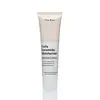What's inside
What's inside
 Key Ingredients
Key Ingredients

 Benefits
Benefits

 Concerns
Concerns

 Ingredients Side-by-side
Ingredients Side-by-side

Water
Skin ConditioningGlycerin
HumectantCaprylic/Capric Triglyceride
MaskingPropylene Glycol
HumectantSqualane
EmollientSimmondsia Chinensis Seed Oil
EmollientHydrogenated Phosphatidylcholine
EmulsifyingButyrospermum Parkii Butter
Skin ConditioningCholesterol
EmollientCeramide NP
Skin ConditioningTrehalose
HumectantSodium PCA
HumectantUrea
BufferingGlyceryl Caprylate
EmollientPolyquaternium-51
Skin ConditioningHyaluronic Acid
HumectantTriacetin
AntimicrobialXanthan Gum
EmulsifyingCarbomer
Emulsion StabilisingTriethanolamine
BufferingEthylhexylglycerin
Skin ConditioningWater, Glycerin, Caprylic/Capric Triglyceride, Propylene Glycol, Squalane, Simmondsia Chinensis Seed Oil, Hydrogenated Phosphatidylcholine, Butyrospermum Parkii Butter, Cholesterol, Ceramide NP, Trehalose, Sodium PCA, Urea, Glyceryl Caprylate, Polyquaternium-51, Hyaluronic Acid, Triacetin, Xanthan Gum, Carbomer, Triethanolamine, Ethylhexylglycerin
Water
Skin ConditioningButylene Glycol
HumectantPanthenol
Skin ConditioningIsononyl Isononanoate
EmollientHydrolyzed Silk
HumectantCentella Asiatica Extract
CleansingPolygonum Cuspidatum Root Extract
AntioxidantScutellaria Baicalensis Root Extract
AstringentCamellia Sinensis Leaf Extract
AntimicrobialGlycyrrhiza Glabra Root Extract
BleachingChamomilla Recutita Flower Extract
MaskingRosmarinus Officinalis Leaf Extract
AntimicrobialBifida Ferment Filtrate
Skin ConditioningPropolis Extract
Skin ConditioningHoney Extract
HumectantHyaluronic Acid
HumectantPhospholipids
Skin ConditioningSphingolipids
EmollientPropylene Glycol
HumectantGuaiazulene
AntimicrobialCaprylic/Capric Triglyceride
MaskingEquisetum Arvense Extract
AstringentSodium Acrylates Copolymer
Lecithin
EmollientLimnanthes Alba Seed Oil
Skin ConditioningGlycerin
HumectantEthylhexylglycerin
Skin ConditioningBetaine
HumectantTocopheryl Acetate
AntioxidantAlpha-Glucan Oligosaccharide
CleansingCarbomer
Emulsion StabilisingMelaleuca Alternifolia Leaf Oil
AntioxidantWater, Butylene Glycol, Panthenol, Isononyl Isononanoate, Hydrolyzed Silk, Centella Asiatica Extract, Polygonum Cuspidatum Root Extract, Scutellaria Baicalensis Root Extract, Camellia Sinensis Leaf Extract, Glycyrrhiza Glabra Root Extract, Chamomilla Recutita Flower Extract, Rosmarinus Officinalis Leaf Extract, Bifida Ferment Filtrate, Propolis Extract, Honey Extract, Hyaluronic Acid, Phospholipids, Sphingolipids, Propylene Glycol, Guaiazulene, Caprylic/Capric Triglyceride, Equisetum Arvense Extract, Sodium Acrylates Copolymer, Lecithin, Limnanthes Alba Seed Oil, Glycerin, Ethylhexylglycerin, Betaine, Tocopheryl Acetate, Alpha-Glucan Oligosaccharide, Carbomer, Melaleuca Alternifolia Leaf Oil
 Reviews
Reviews

Ingredients Explained
These ingredients are found in both products.
Ingredients higher up in an ingredient list are typically present in a larger amount.
This ingredient is an emollient, solvent, and texture enhancer. It is considered a skin-softener by helping the skin prevent moisture loss.
It helps thicken a product's formula and makes it easier to spread by dissolving clumping compounds.
Caprylic Triglyceride is made by combining glycerin with coconut oil, forming a clear liquid.
While there is an assumption Caprylic Triglyceride can clog pores due to it being derived from coconut oil, there is no research supporting this.
Learn more about Caprylic/Capric TriglycerideCarbomer is a polymer of acrylic acid. Its main role is to create a gel consistency.
A high amount of carbomer can cause pilling or balling up of products. Don't worry, most products contain 1% or less of carbomer.
Ethylhexylglycerin (we can't pronounce this either) is commonly used as a preservative and skin softener. It is derived from glyceryl.
You might see Ethylhexylglycerin often paired with other preservatives such as phenoxyethanol. Ethylhexylglycerin has been found to increase the effectiveness of these other preservatives.
Glycerin is already naturally found in your skin. It helps moisturize and protect your skin.
A study from 2016 found glycerin to be more effective as a humectant than AHAs and hyaluronic acid.
As a humectant, it helps the skin stay hydrated by pulling moisture to your skin. The low molecular weight of glycerin allows it to pull moisture into the deeper layers of your skin.
Hydrated skin improves your skin barrier; Your skin barrier helps protect against irritants and bacteria.
Glycerin has also been found to have antimicrobial and antiviral properties. Due to these properties, glycerin is often used in wound and burn treatments.
In cosmetics, glycerin is usually derived from plants such as soybean or palm. However, it can also be sourced from animals, such as tallow or animal fat.
This ingredient is organic, colorless, odorless, and non-toxic.
Glycerin is the name for this ingredient in American English. British English uses Glycerol/Glycerine.
Learn more about GlycerinHyaluronic acid is naturally found in healthy skin. It is a humectant, meaning it draws moisture to your skin.
This ingredient helps hydrate, soothe, and protect the skin.
What makes hyaluronic acid so hydrating? It has the capacity to bind or hold large amounts of water.
Fun fact: It is already naturally found in our bodies, such as the fluids of our eyes and our joints.
Studies find this ingredient to have anti-inflammatory and anti-microbial properties. This can help speed up wound-healing.
Hyaluronic acid can be irritating if the molecule has a low-molecular weight, or if the molecules are small.
One study found low-molecular weight hyaluronic acid to be pro-inflammatory, meaning some people may experience irritation. This is because our bodies use hyaluronic acid in the wound-healing process to signal to our bodies, via irritation, that something needs healing.
The same study found high-molecular weight hyaluronic acid to be anti-inflammatory.
These are some other common types of Hyaluronic Acid:
Learn more about Hyaluronic AcidPropylene Glycol is an odorless, colorless liquid. As a humectant, it helps skin retain moisture. It also aids in delivering active ingredients.
Another role of this ingredient is preventing a product from melting or freezing. Propylene glycol also adds antimicrobrial properties to a product, elongating product lifespan.
This ingredient is considered an organic alcohol and commonly added into both cosmetics and foods.
Those with sensitive skin or conditions may develop a rash when using this ingredient.
Learn more about Propylene GlycolWater. It's the most common cosmetic ingredient of all. You'll usually see it at the top of ingredient lists, meaning that it makes up the largest part of the product.
So why is it so popular? Water most often acts as a solvent - this means that it helps dissolve other ingredients into the formulation.
You'll also recognize water as that liquid we all need to stay alive. If you see this, drink a glass of water. Stay hydrated!
Learn more about Water